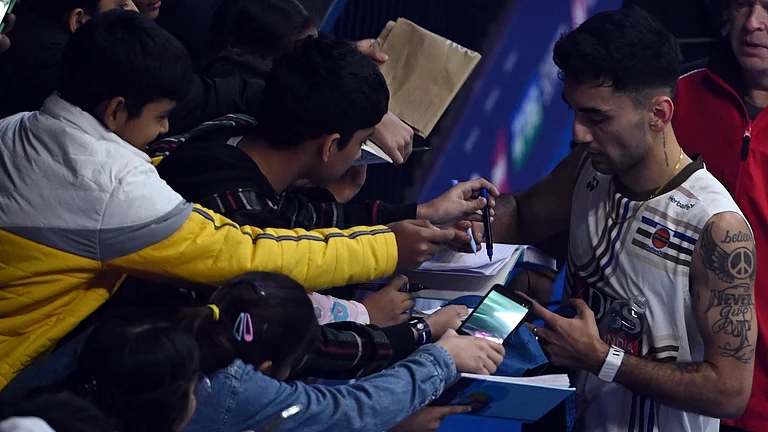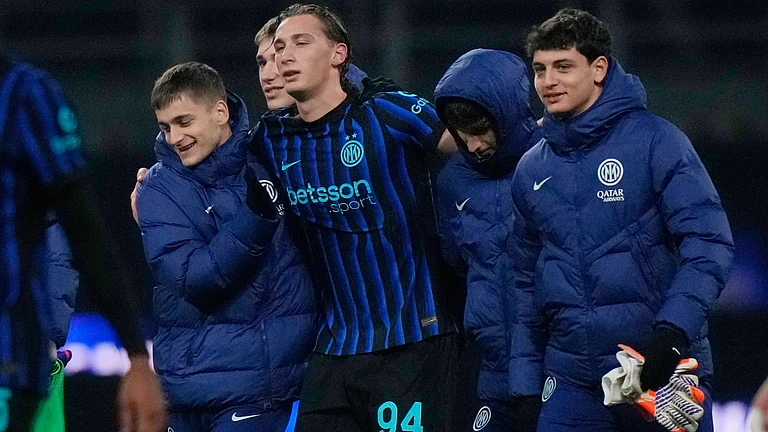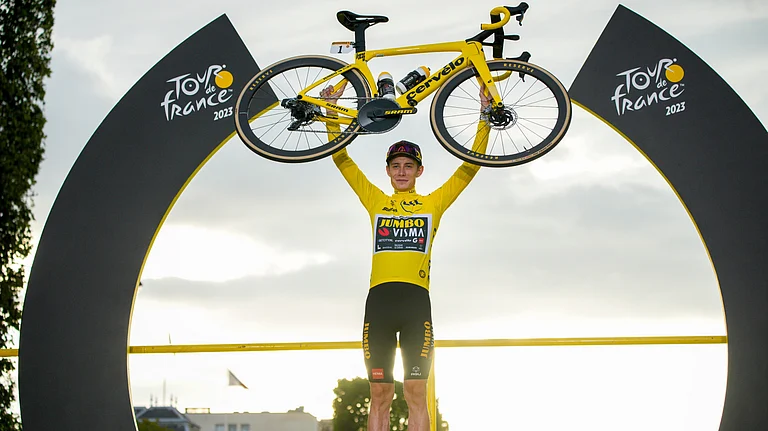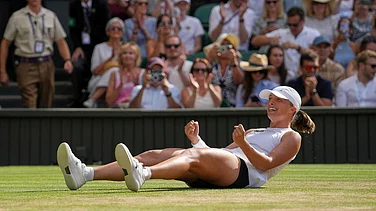Two years ago, as Covid’s second avatar sent everyone scurrying back indoors, two accomplished men connected online and spoke about Baloo Palwankar. It showed how important Palwankar, India’s first Dalit cricketer and first great spinner, was to the game as well as to the history of India.
“Why don’t you talk a little about Baloo Palwankar, because the chapter in your book “Spin and Other Turns” was absolutely fascinating. Also, pretty heartbreaking,” said actor and sports buff Naseeruddin Shah, during the conversation with historian and cricket lover Ramachandra Guha. Guha animatedly put Palwankar into perspective, rocking in his seat, almost jumping out of the screen while making his points.
“He was a Dalit from Dharwad, who was a left-arm spinner, the preeminent Hindu spinner [of his time],” Guha said. “When the first all-India team captained by the Maharaja of Patiala toured England in 1911, he got 150 wickets at age 36 and some county contracts. When he came back, B R Ambedkar, who was then a rising student leader, gave a speech of appreciation on behalf of the Dalits of Mumbai for Baloo.”
But while Palwankar’s cricketing ability was appreciated, it did not stop the humiliating treatment and societal rules he had to follow as a Dalit. He had to eat his meals separately, for example.
Guha also mentioned another ugly truth about the caste system.
“He (Palwankar) was never made captain, because that would have meant upturning the caste hierarchy. The captain had to be an upper-caste Brahmin,” Guha said. Palwankar came from a family of ‘chamars’, or leather workers, and stumbled upon the game in the late 19th century when British officers based in Pune would leave behind cricket gear.
Hemant Kenkre, former Cricket Club of India (CCI) captain, a passionate observer of Indian cricket for over 50 years and a regular columnist, vehemently rules out caste discrimination in modern-day Indian cricket. But he believes it would have existed in the early days as the game was structurally and culturally elitist at that time.
“The whole genesis of the game was in the P G Wodehousian, public school and Maharaja culture,” says Kenkre. “That was the feeder system [of players]. When that’s your cradle, people who were not from a certain social or economic milieu are going to find it hard to break in.”
Then Mohandas Gandhi returned from South Africa and went about eradicating untouchability, and things changed in cricket as well. Baloo Palwankar might not have become captain of his team. But within a decade or so, his younger brother, Vithal, led the Hindus team for four years (1923-26) in the Bombay Quadrangular. (For the record, Baloo and Vithal had two more brothers, Shivram and Ganpat. They also played cricket).
The Quadrangular was then the biggest cricket tournament in India. It would feature the Hindus, Muslims, Parsis and a team made up of European members of the Bombay Gymkhana. Vithal Palwankar led the Hindus to the title with great performances. When he scored a hundred against the Europeans, upper caste fans carried him off the field on their shoulders, chanting “Mahatma Gandhi ki jai, Palwankar Vithal ki jai”.
“Cricket played a role in social emancipation, the staggering achievements and struggles of Baloo and Vithal Palwankar played a role in undermining caste prejudices among upper caste Brahmins, Banias and Kshatriyas in Mumbai,” Guha said in his conversation with Shah.
It helped, Guha believes, that Vithal was a batter unlike his brother. Batters have traditionally been preferred for captaincy.
It is difficult to establish exactly how many Indian cricketers over the years have been Dalits. Most athletes do not like the subject of caste being brought up. It is seen as a personal, sensitive matter. But the number is very low, estimated to be between four and six. This excludes the Palwankar brothers because their careers predated India’s Test status.
Vinod Kambli is a Dalit. On Ambedkar Jayanti in the past, he has tweeted ‘Jai Bhim’. But he has never liked talking about the subject.
However, there is no evidence of bias in Kambli’s story. When he and Sachin Tendulkar, who came from an upper caste middle-class family, conquered the maidans of Mumbai, both were equally celebrated. They went to the same school, Shardashram Vidyamandir, and had the same coach, Ramakant Achrekar, who was from the OBC Bhandari caste―another proof that caste bias, if any, is secondary to merit in modern Indian cricket. Both also did Pepsi ads together.
That Tendulkar and Kambli were like brothers shows that caste was never a factor in their bond or their cricketing journeys. But Kambli faded and it is an open secret that indiscipline and declining performances contributed to his fall. His last 10 Test innings were 9, 19, 40, 0, 0, 6, 18, 0, 27, and 28. In ODIs, his last 20 matches produced only one half-century.
Chandra Bhan Prasad, a Dalit columnist, once wrote, “It’s not as if there are people standing with rods preventing Dalits from becoming cricketers.” Bu Prasad did assert that the cricketing system should be doing “something” about the low number of Dalit cricketers.
To keep caste and family out of fights and leg-pulling is one of the unspoken rules of Indian society. And it is observed on most cricket grounds. Says Kenkre: “People may call each other ‘kaalya’ (dark-skinned), ‘jaadya’ (chubby) or ‘ghaarya’ (light-eyed). That’s all in good fun. But no one ever mentions anyone’s ‘jaat’ (caste).” He says if there was a bias, leading figures from the Bhandari caste, such as Vijay and Sanjay Manjrekar and Ramakant Achrekar, would not have been decorated names in Indian cricket.
Many years ago, The Sydney Morning Herald asked Harsha Bhogle and Ravi Shastri about the scanty number of Dalits who have played for India. Both ruled out any bias. “I don't think that anyone in the Indian team would even be aware that X is from one caste and Z from another,” Bhogle said.
Shastri said, “It’s (caste) got nothing to do with it―‘because they are Brahmins they are picked’. I think they’re just being picked because they are Indians. The game is just popular among Indians, as simple as that. It's just that you are good enough to play for your country, and that’s why you are picked.”
Cricket’s popularity and finances have made issues like caste almost irrelevant. What matters is what you bring to the table. There might be cliques, factions and favouritism, but to think that in a selection meeting the chief selector walks in and asks colleagues for the caste of a player along with his cricket stats would be far-fetched.
To a large extent, caste attitudes are also shaped by the city and culture a sport or a player inhabits. In certain parts of India, a player’s caste is occasionally brought up. But then this is by trolls and trouble-makers and not the sport’s stakeholders.
In 2021, after the Indian women’s hockey team lost in the Tokyo Olympics semi-final against Argentina, a few upper caste men lit crackers near the home of striker Vandana Katariya, who is Dalit, in Roshnabad, Uttarakhand. A casteist remark was allegedly made about the number of Dalit players in the team. But then it also emerged that Katariya’s brothers, Chandrashekhar, Pankaj and Saurabh, had intimidated their neighbours in the past. Three years earlier, both families―the Katariyas and their neighbour, Titu Pal, whose sons were arrested after the firecracker incident, had registered FIRs against each other in 2018.
So there was more to the firecracker incident than just the hockey result.
A number of Dalit players have played for India in hockey. According to leading hockey expert and historian, K Arumugam, Ranganathan Francis and the brothers, V J Peter, V J Philips, all multiple Olympians, were Dalit Christians.
In women’s boxing, Thulasi Helen comes from the Dalit community. She had made allegations of sexual abuse against the Tamil Nadu boxing association’s A K Karuna, and after that her career fizzled out.
Dalit well-wishers have made a case for reservations in teams, the way South Africa has a quota for Black cricketers. But it is an extremely controversial and complex method. Michael Holding, despite being a West Indian who is sensitive to racism, had doubts about the quota system.
“When you pick someone just because you think you have to have certain boxes ticked, whether they are good or not…They (those players) are carrying an extra burden because there will always be people who will say they are only there because regulations say they have to be there,” Holding once said.
Besides, a quota system goes against the very fundamental principle of sports, that a team should be the “best possible eleven”, selected on merit alone.
The solution lies in making sports more accessible to Dalits, training and mentoring them regularly, so that they organically increase their chances of selection, and get the respect and opportunities they deserve.


























